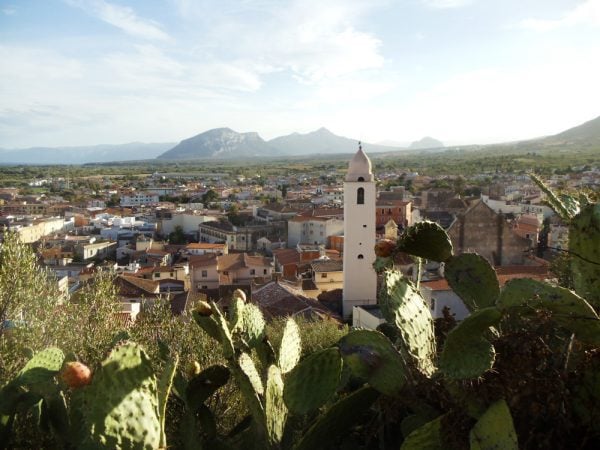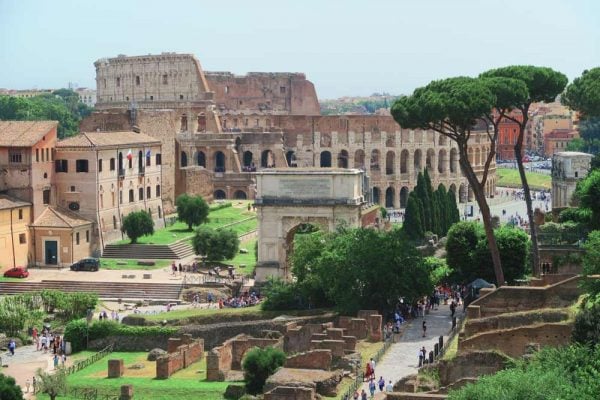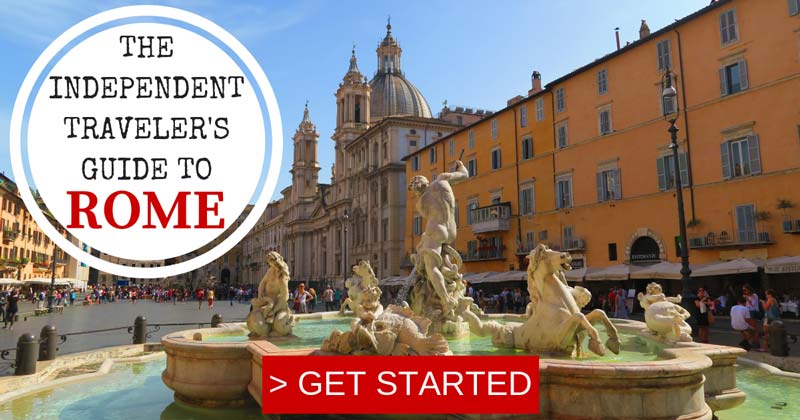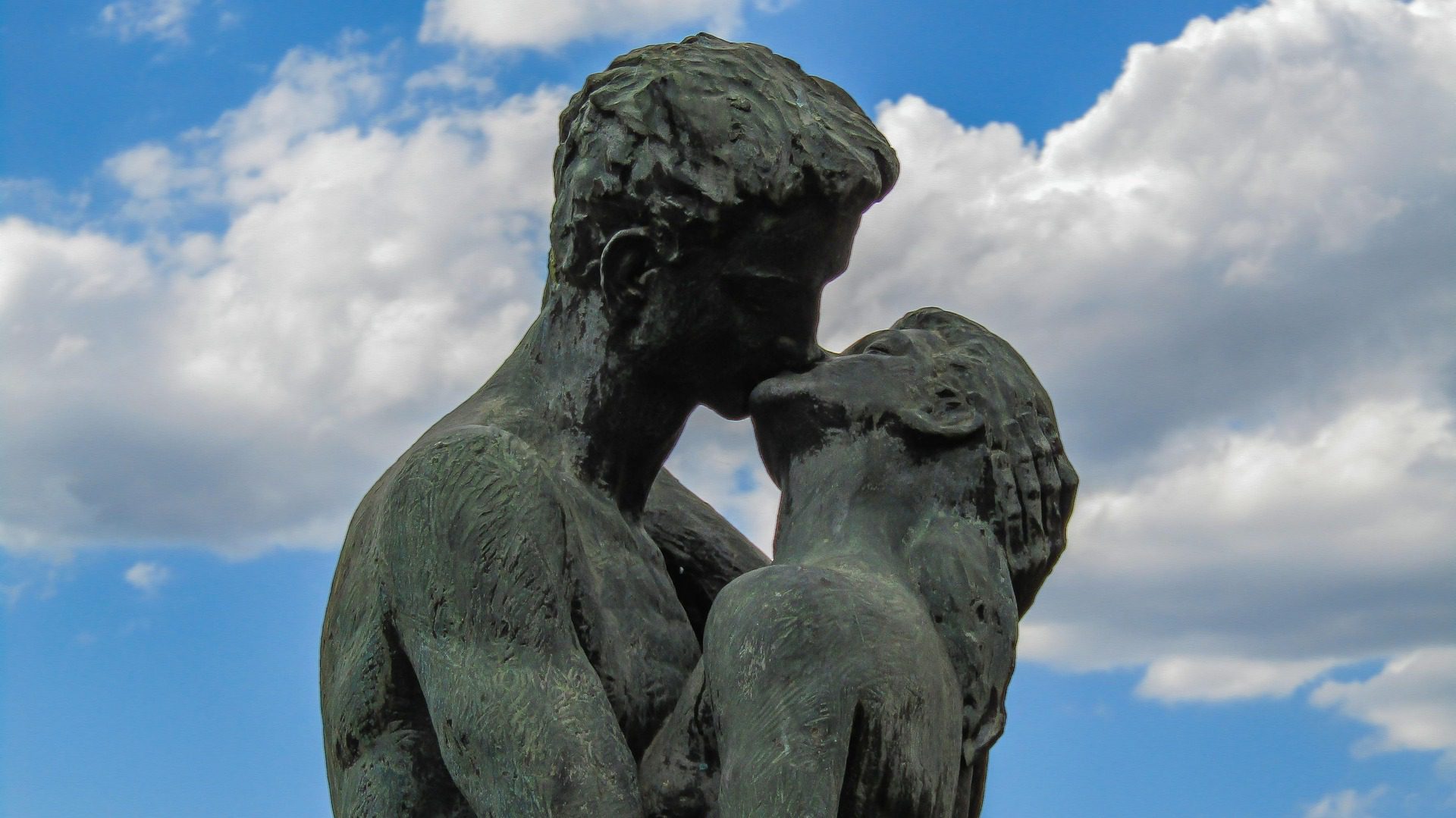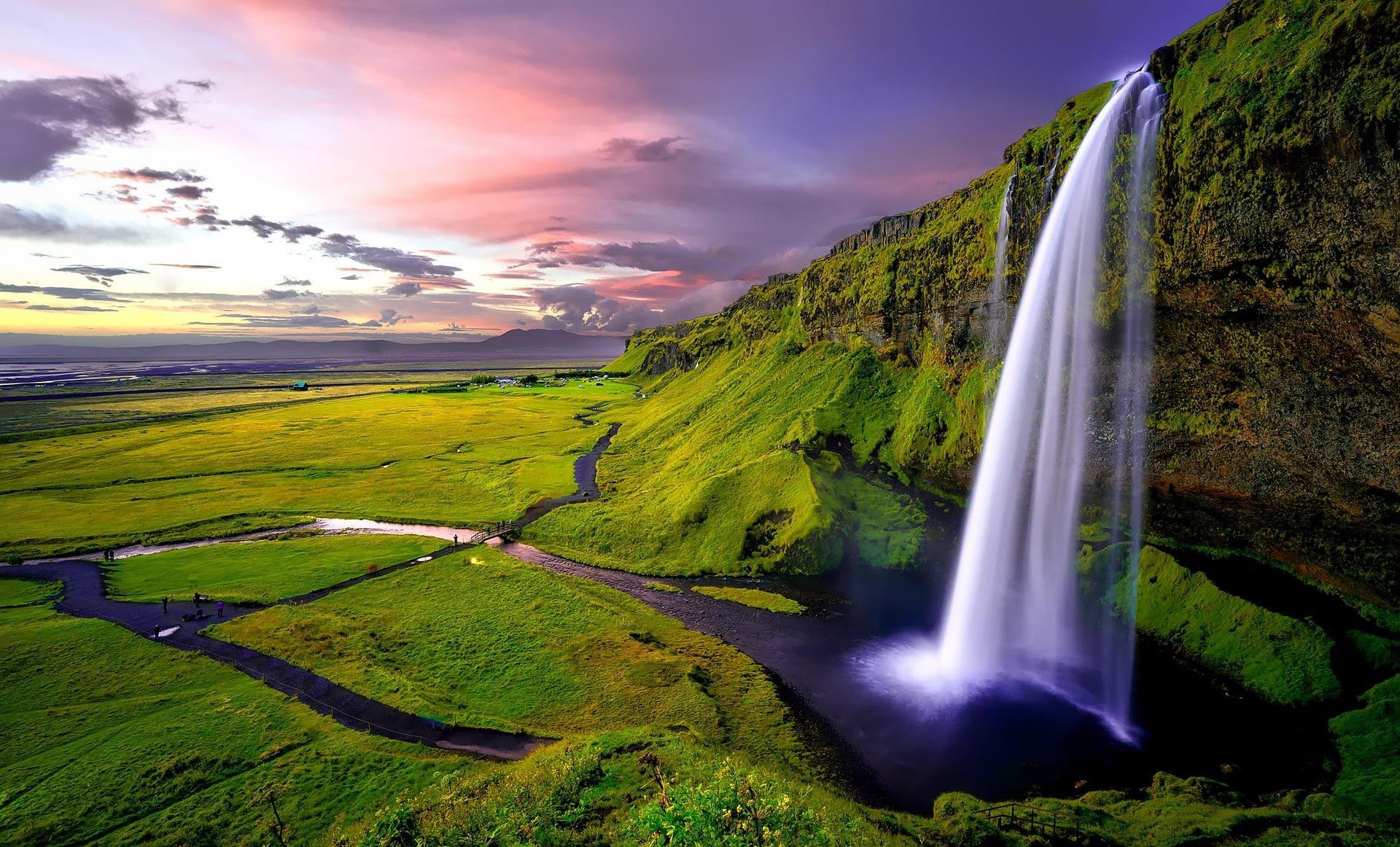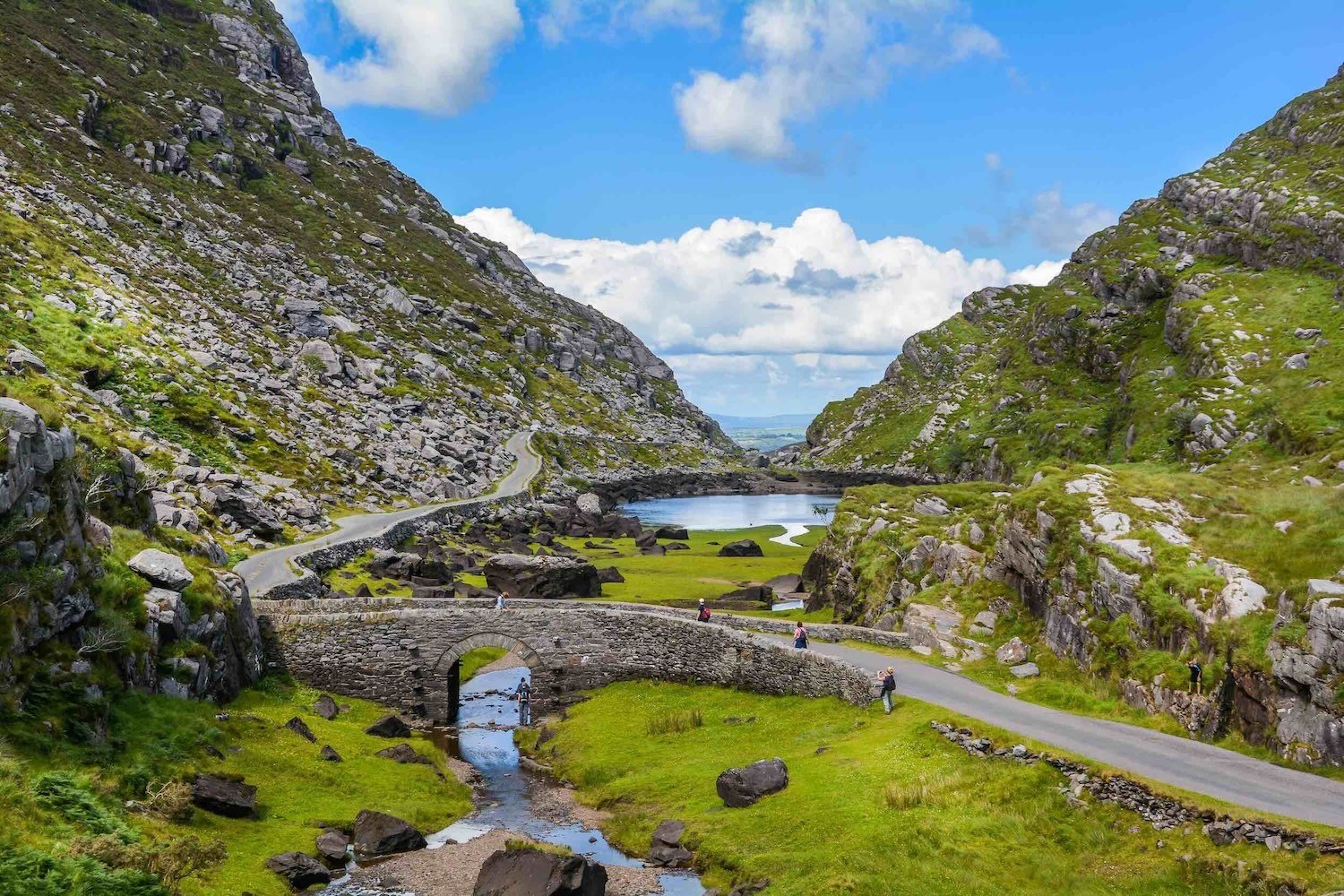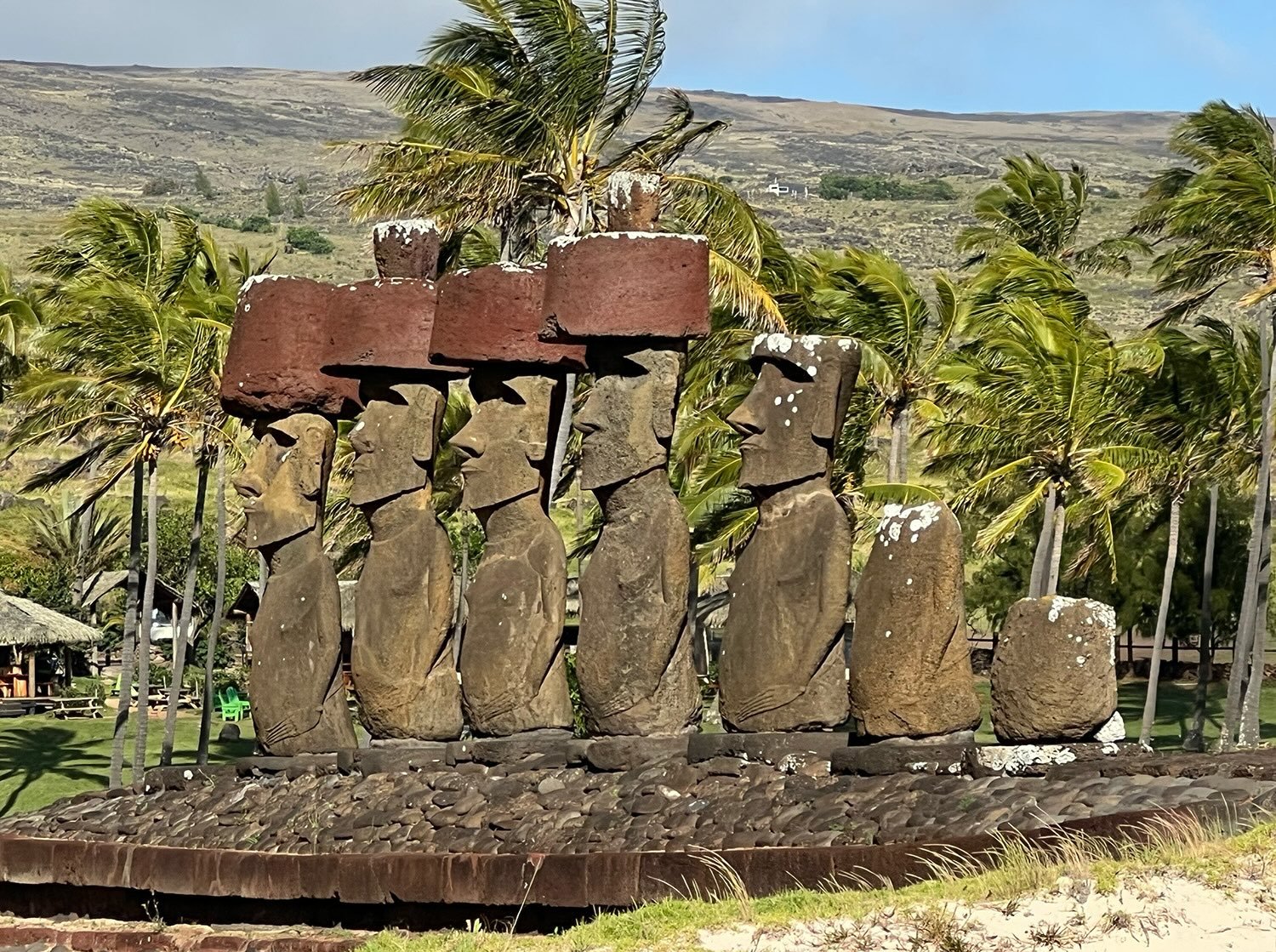Best Churches In Rome
Santa Maria in Trastevere
In the very heart of Trastevere, one of Rome’s most charming areas for visitors, lies the Church of Our Lady in Trastevere. Together with San Lorenzo in Damaso, this is one of the oldest churches in Rome, with an official history dating back to the 4th century and even perhaps as far as the early 3rd century AD. Much of the current structure dates back to the 12th century, including the cathedral’s exquisite mosaics by Pietro Cavallini.


There is also a bit of legend surrounding this area, said to be the site where a fountain of oil sprung out of the ground on the day of Christ’s birth. It’s probably the reason why Christians have practiced their faith here pretty much ever since.
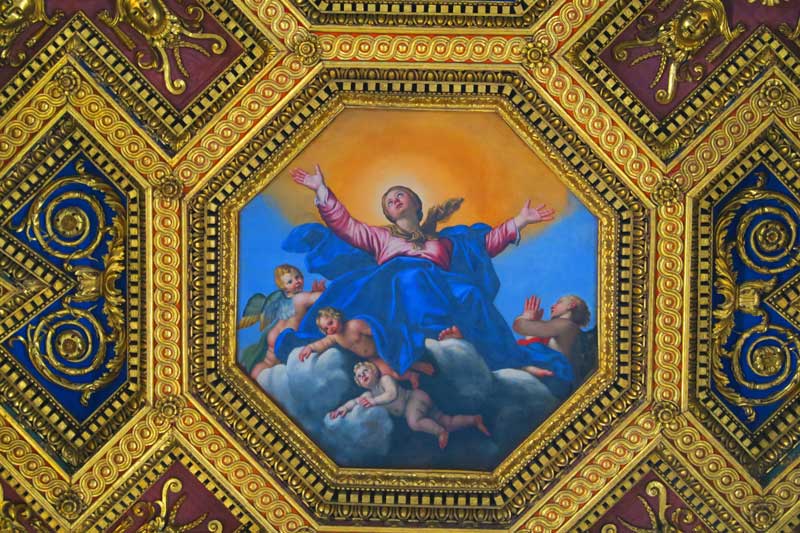

Where: Piazza di Santa Maria in Trastevere
Opening times: daily from 7:30 am–9 pm | no visits during mass
Sant’Ivo alla Sapienza
This 17th-century church is a masterpiece of Roman Baroque architecture and has a very interesting history. It is not the most lavish of Rome’s churches but its interior is very impressive. In the 14th century, a chapel stood here for the use of students attending the University of Rome (La Sapienza). As time passed, a larger structure was needed and in 1632, work began on the present church by Italian architect Francesco Borromini.

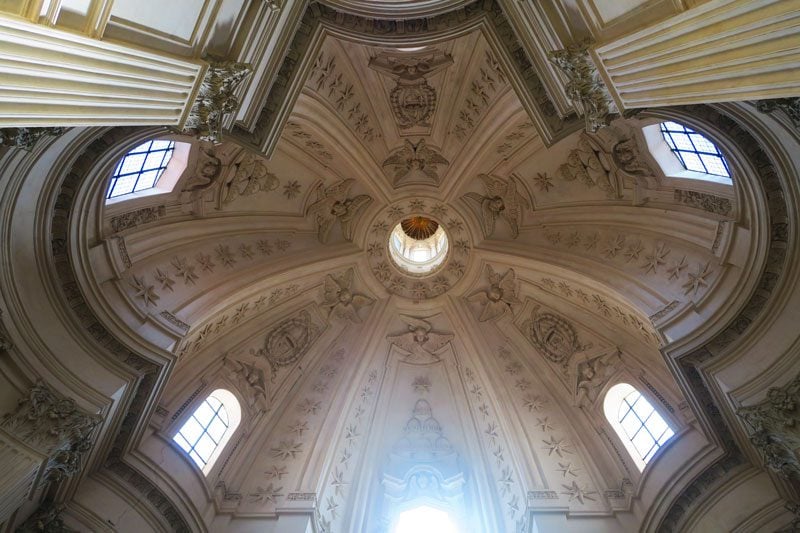
Rising at the end of an interior courtyard in the historic center of Rome, its interior is much smaller than what you’ve seen so far on this list, yet its dome is well worth the visit even if it has no frescos or gold decorating it. Only open to the public for a short time on Sundays, it’s also one of the most challenging churches to visit in Rome.
Where: Corso del Rinascimento, not far from Piazza Navona
Opening times: Sunday from 9 am-12 pm
St Maria Sopra
Completed in the late 14th century, this is the only Gothic church in Rome and a real treasure trove in terms of religious art. Until recent times, it was thought that the name of the church originated from its position on top of an ancient temple dedicated to the goddess Minerva (sopra – on top of) but in fact, it is not known why the basilica actually took the name of the goddess.
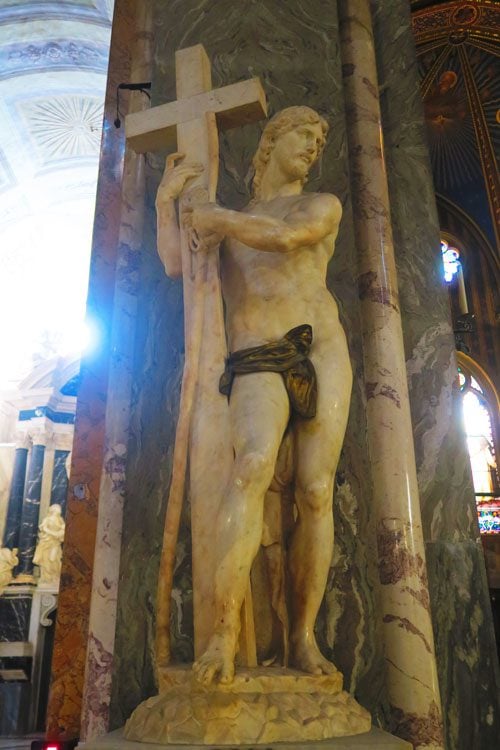
Of the basilica’s many highlights, be sure to check out Michaelangelo’s marble sculpture of Christ bearing the cross and the Carafa Chapel, with its 15th-century frescoes by Filippino Lippi. At the altar, check out the exposed tomb of Saint Catherine of Siena.
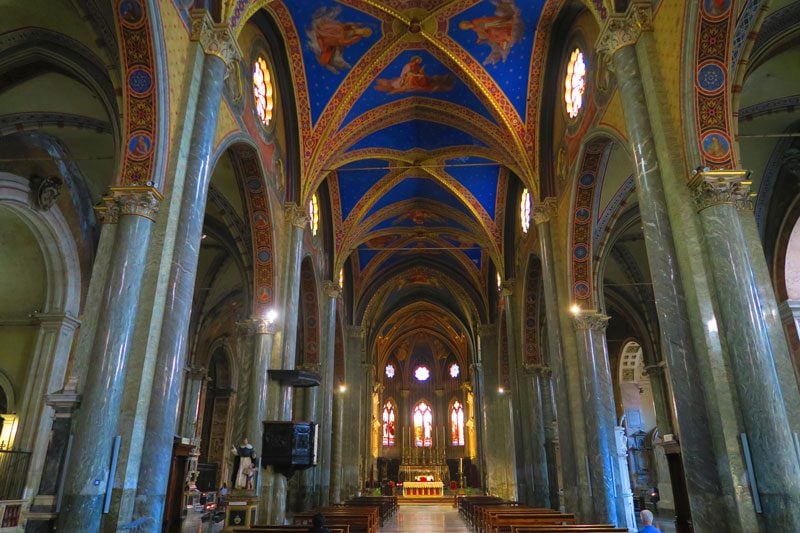





On the church’s exterior, check out Bernini’s famous 17th-century elephant statue carrying the weight of an ancient Egyptian obelisk, one of 13 obelisks decorating Rome’s piazzas.

Where: Piazza della Minerva, not far from the Pantheon
Opening times: weekdays from 7:30 am-7 pm, weekends 7:30 am–12:30 pm and 3:30–7 pm
Sant’ Ignazio Di Loyola
A stone’s throw away from Santa Maria Sopra Minerva, the Cathedral of Sant’Ignazio is dedicated to the founder of the Jesuit movement – Ignatius of Loyola – who is buried in the Gesu. The Baroque cathedral was built between 1626 and 1650 as the new place of worship for students in the adjacent college that once stood here, replacing an older church that could no longer meet the needs of the growing student roster.
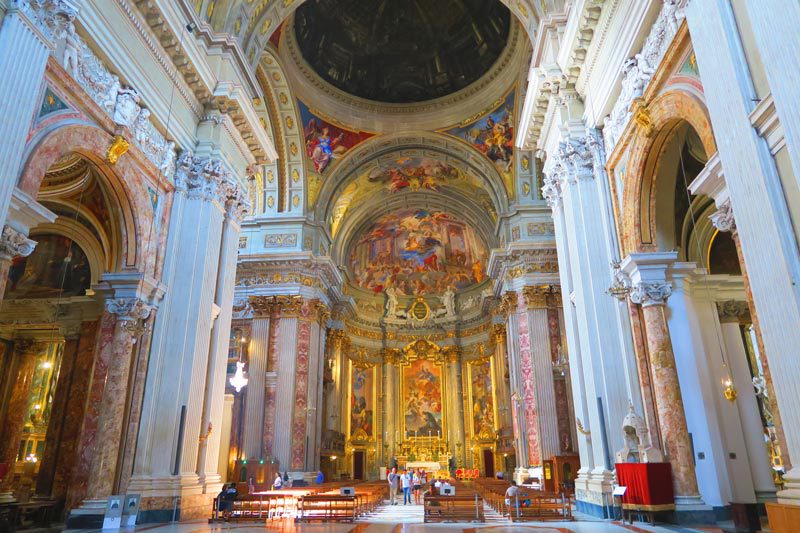
In those years, the Jesuits did not have the means to build lavish institutions but that all changed when Pope Gregory XV took office. An old pupil of Loyola, the new pope found the means to erect a church worthy of commemorating the now canonized saint. The old church was demolished in 1650 to make way for what we see today. Undoubtedly, the church’s top treasure is the incredible fresco ceiling painted by Andrea Pozzo, depicting the founding saint on his way to heaven.

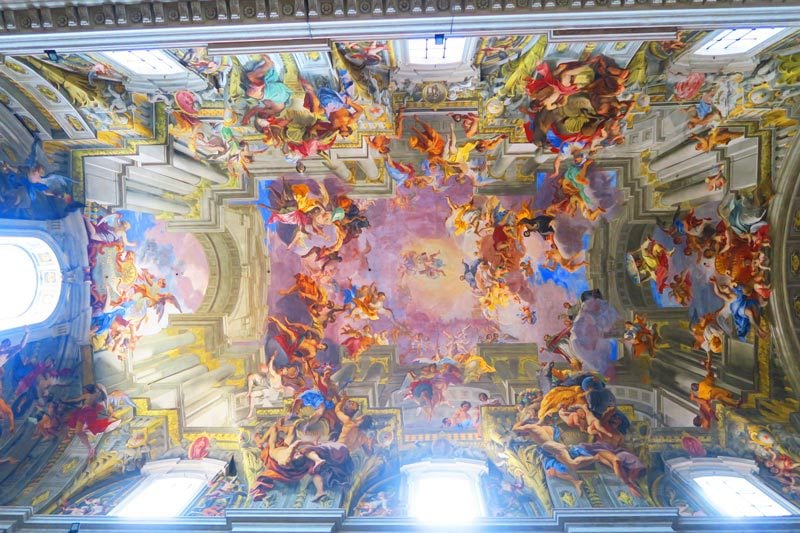
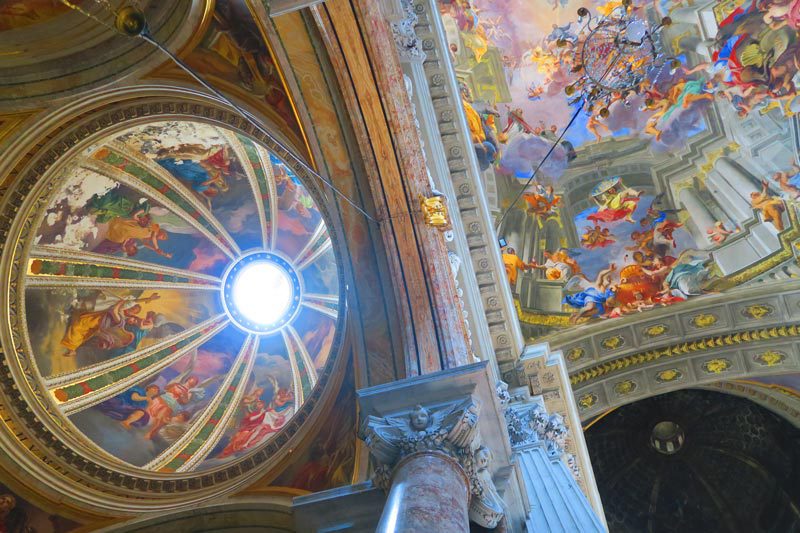
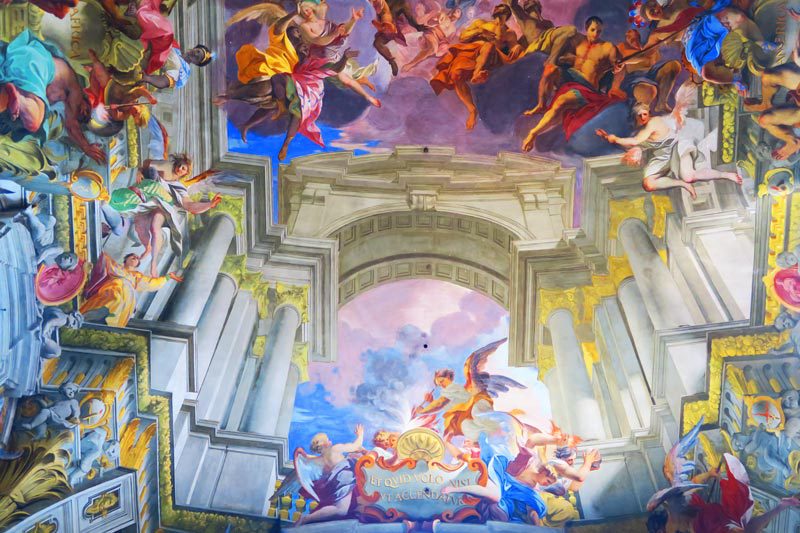
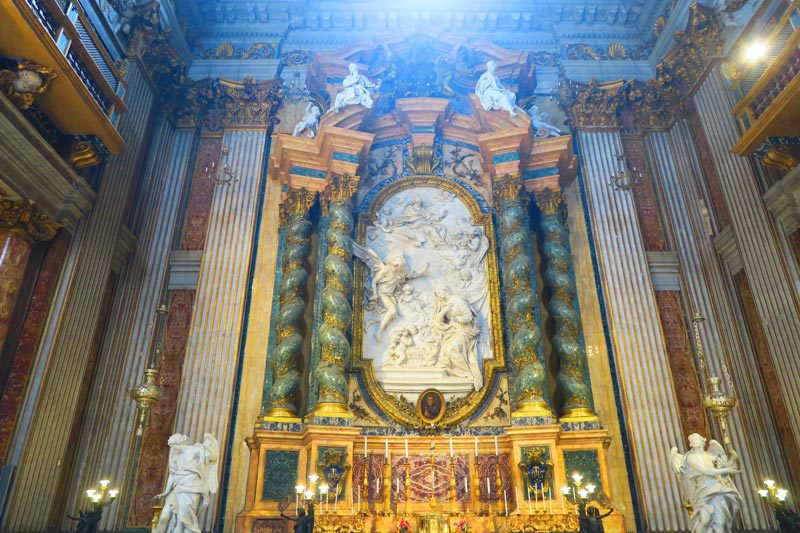

Where: Via del Caravita, not far from the Pantheon
Opening times: Mon-Sat from 7:30 am-7 pm, Sundays 9 am–7 pm
San Marcello Al Corso
This inconspicuous-looking church is right on Via del Corso (Rome’s touristy shopping street) so you might as well step inside for a quick look. Like most of the best churches in Rome, this one sits atop the relics of an older 8th-century church built by Pope Adrain I. San Marcello al Corso was completed in 1697 and is dedicated to Pope Marcellus I, who is buried together with other saints under the main altar.
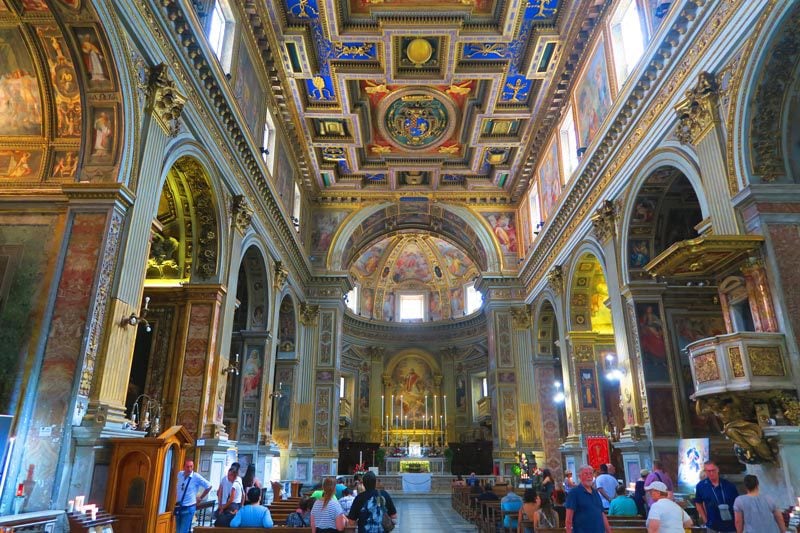
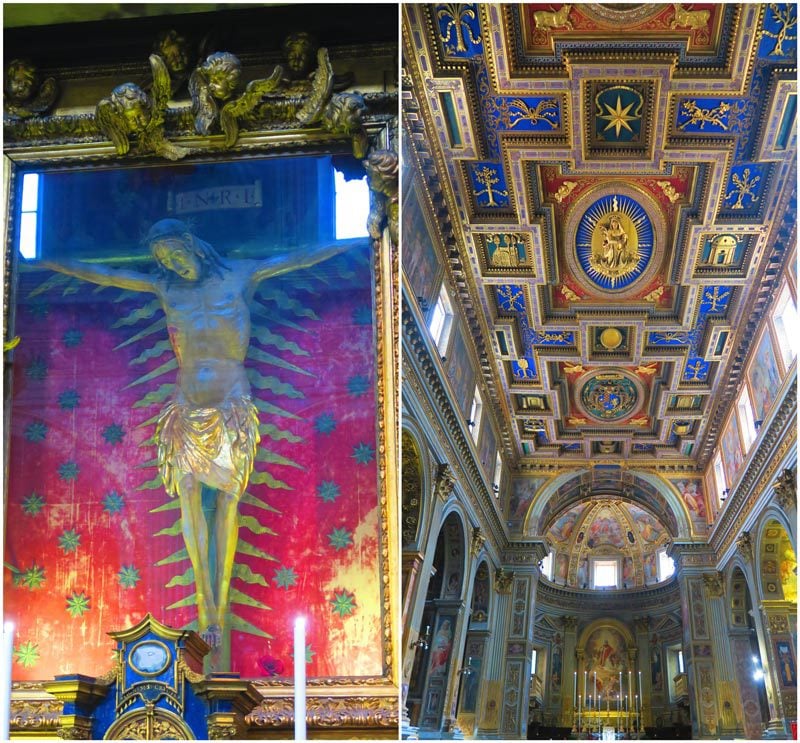
In addition to the church’s magnificent ceiling, its two signature features include the 1613 painting – Crucifixion – by Giovanni Battista Ricci, and a 14th-century crucifix that survived a major fire in 1519 which allegedly contains a relic of the True Cross.
Where: Piazza San Marcello, not far from Piazza Venezia
Opening times: weekdays from 7:30 am–12 pm and 4–7 pm, Sundays 9:30 am–12 pm and 4–7 pm, Saturdays 10 am–12 pm
Sant’Ambrogio e Carlo al Corso
Continuing on Via del Corson towards Piazza del Popolo, this is another one of Rome’s best churches that just happens to be right on the tourist path. Better known as San Carlo al Corso, this 17th-century basilica is dedicated to the patron saints of Milan, Saint Ambrose and Saint Charles Borromeo. Its dome is one of the highest in Rome and its interior is loaded with fine marble. The church’s most impressive feature is the fresco on its central vaulted ceiling, Giacinto Brandi’s “Fall of the Rebel Angels”.

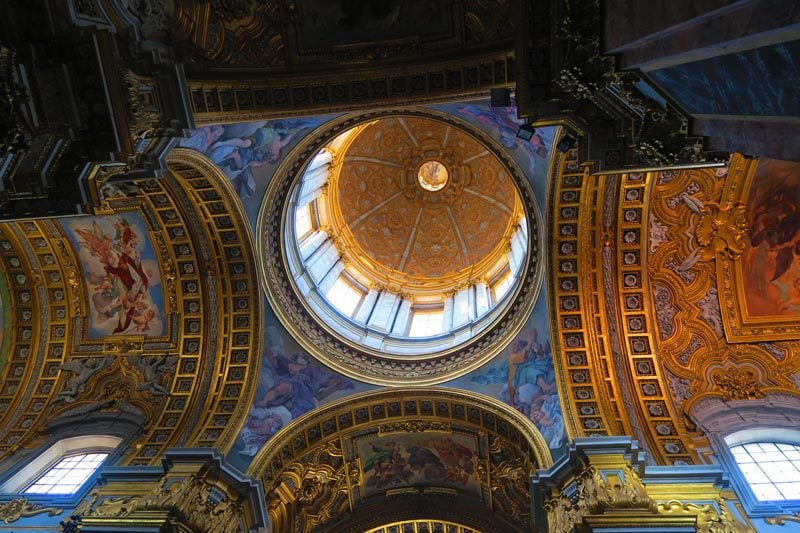
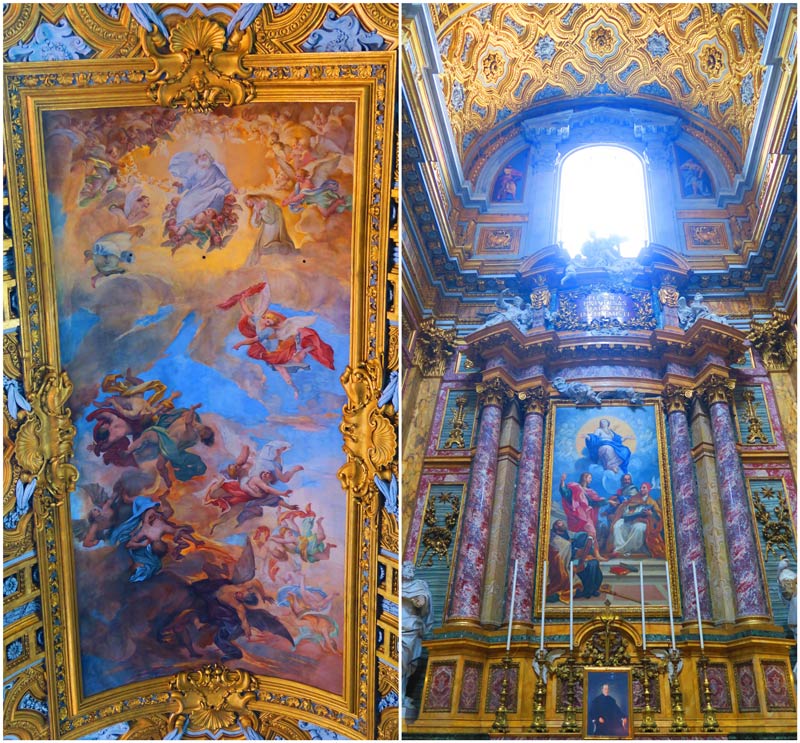
Where: Piazza San Marcello, not far from Piazza Venezia
Opening times: daily from 7 am–9 pm
Basilica Di Santa Francesca Romana
This is one of the coziest and most atmospheric of Rome’s best churches. It is situated right next to the Roman Forum and Colosseum and for good reason, as it occupies sections of the former Temple of Venus and Roma. This site has significant meaning to devout Catholics as it is believed that it is here that saints Peter and Paul challenged Simon Magus who wanted to prove his pagan powers were greater than those held by the apostles. To prove his point, Simon began to levitate in front of the would-be saints as the two fell to their knees in prayer, asking God to show his superiority. At this moment, Simon suddenly fell to the ground in death and the point was proven!
A church was erected on this site beginning in the 10th century and its signature bell tower was added two centuries later. The basilica is more commonly known as Santa Maria Nova. Its interior holds the remains of Pope Gregory XI who brought the papacy back to Rome from Avignon. Other treasures include magnificent mosaic images in the apse, marble sculptures and an exquisitely decorated ceiling.
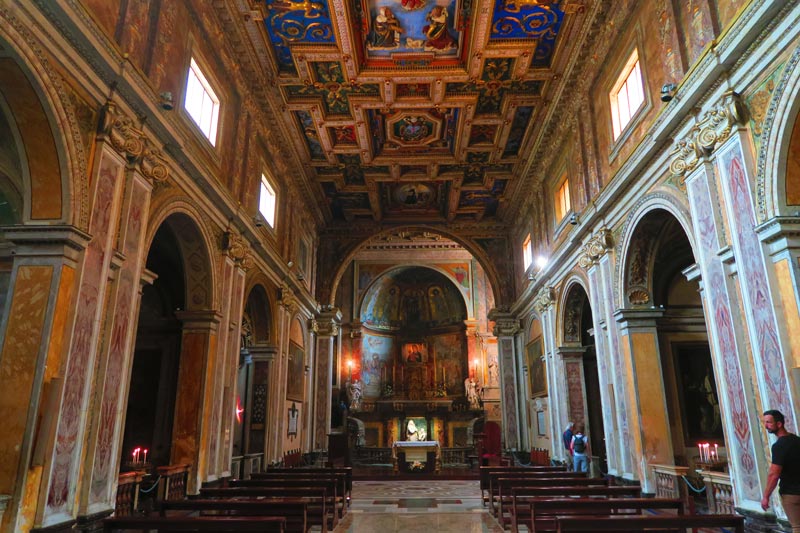
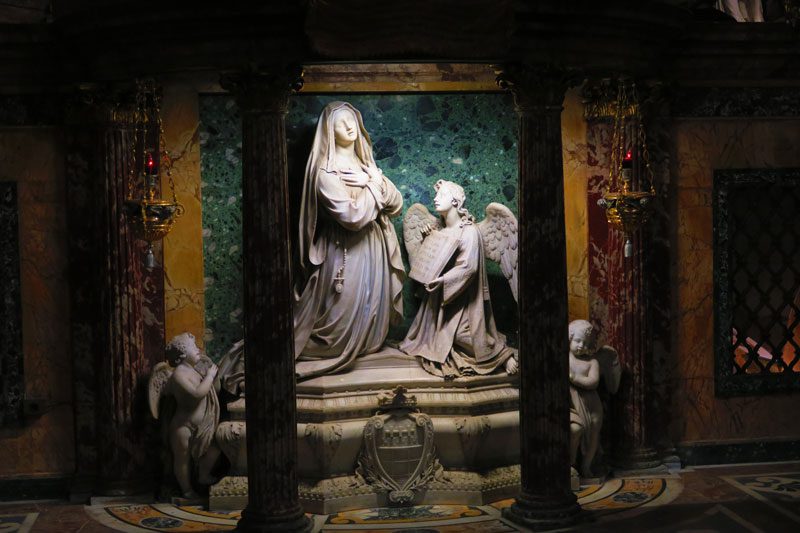
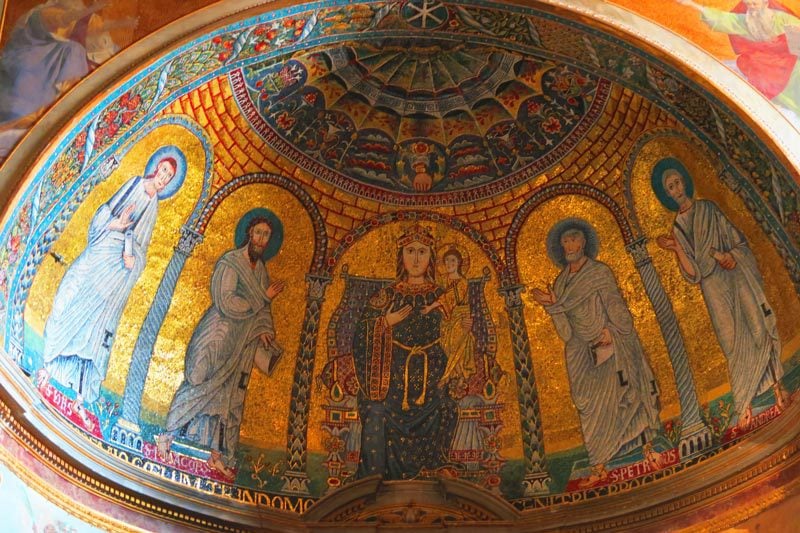
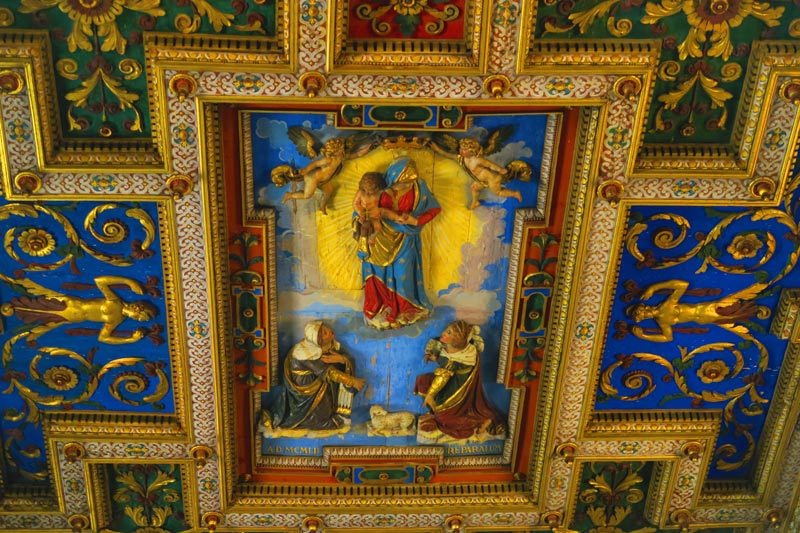
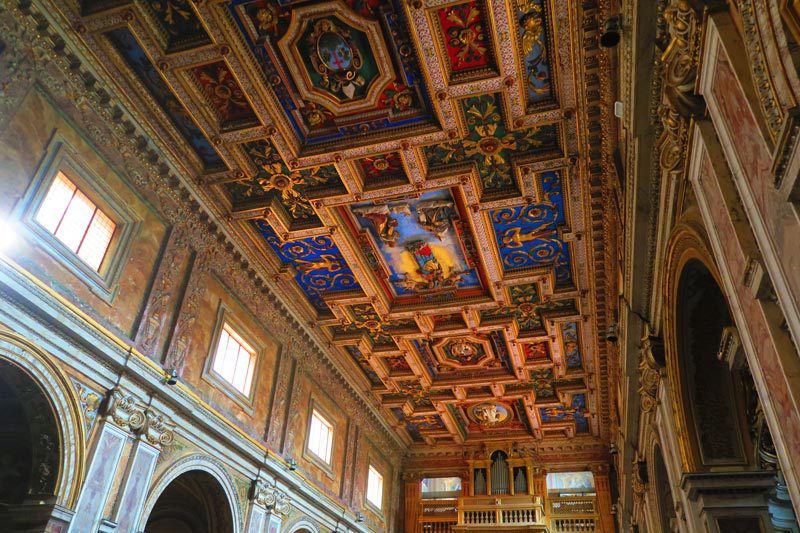
Where: Piazza di Santa Francesca Romana, close to the Colosseum
Opening times: daily from 10:30–12:30 pm and 3:30-6 pm
Tip: enter from the Colosseum entrance, before visiting the Forum
Santa Maria della Concezione dei Cappuccini
This 16th-century church belonged to the Capuchin friars and is better known as Rome’s catacombs. In 1631, the remains of thousands of Capuchin friars were transferred to the large crypt beneath the church. In later years, the bodies of poor Romans were allowed to be buried in the crypt and it is believed that over 4,000 bodies are now present here (at least in some form). I personally visited the Catacombs of Paris which are on a much grander scale than what you’ll see but if you’re into creepy sites, this one’s for you!

Where: Via Vittorio Veneto, close to the Spanish Steps
Opening times: daily from 9 am–6:30 pm
Tip: a ticket must be purchased in order to visit the crypt (€8 | extensive Rome Catacomb tours available)
Santa Maria Maggiore
Completed in the 18th century but dating back to the 4th century, this basilica is part of an elite club known as “major basilicas”, consisting of four of the highest-ranking Roman Catholic churches. Santa Maria Maggiore is often referred to as Our Lady of the Snows, a name given to it in connection with an interesting legend that is celebrated every August 5.
According to the legend, the Virgin Mary appeared to Pope Liberius in a dream in the year 352 AD and instructed him to build a church at the exact spot where a patch of snow will be found on the very next day. The patch of snow would mark the outline of the church and that’s exactly what happened, despite average August temperatures of 31 degrees Celsius in Rome. Every August 5th, the celebration of snow takes place inside the basilica and outside on the piazza.
Santa Maria Maggiore’s interior is impressively spacious and holds many treasures, including a piece of the alleged crib of Christ. The interior is loaded with artwork, as well as the remains of former popes to whom the basilica is their final resting spot. Perhaps the most impressive of the basilica’s jewels is its very own Sistine Chapel, highlighted by a bronze Baldacchino carried by four angels.

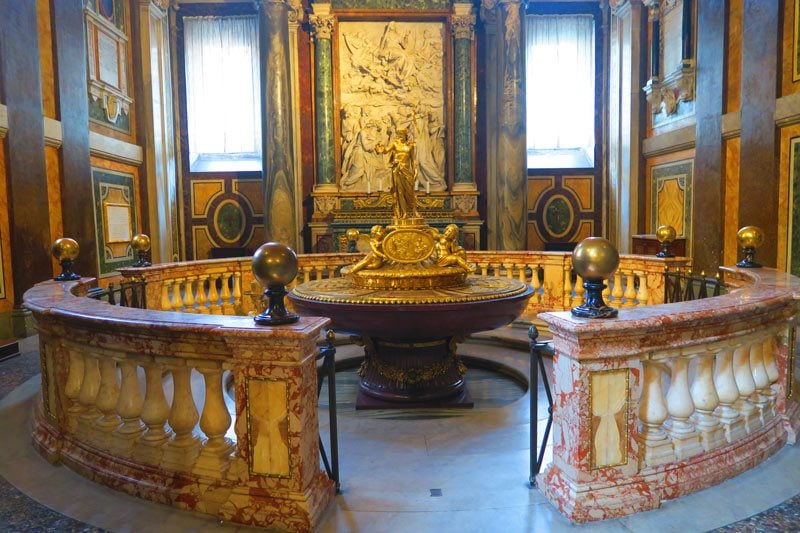
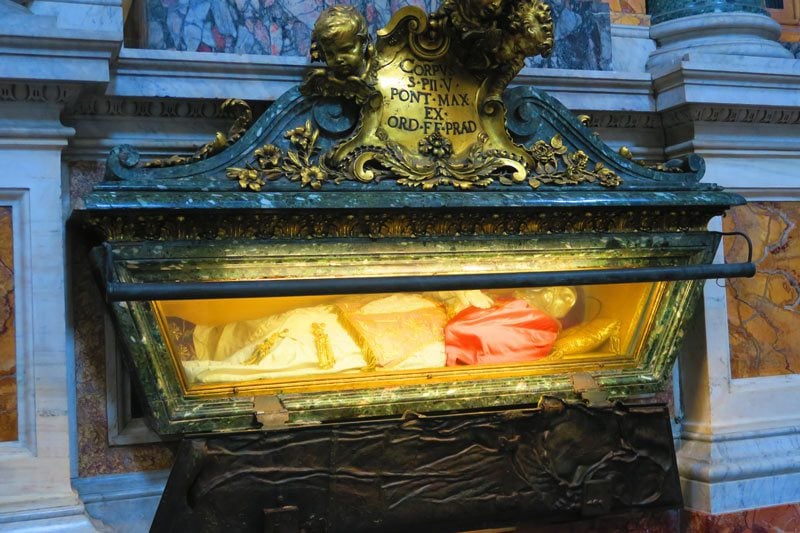
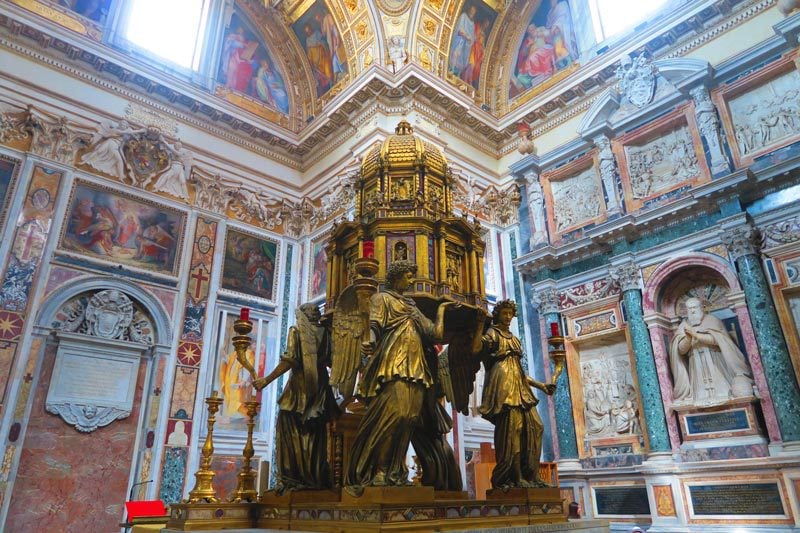
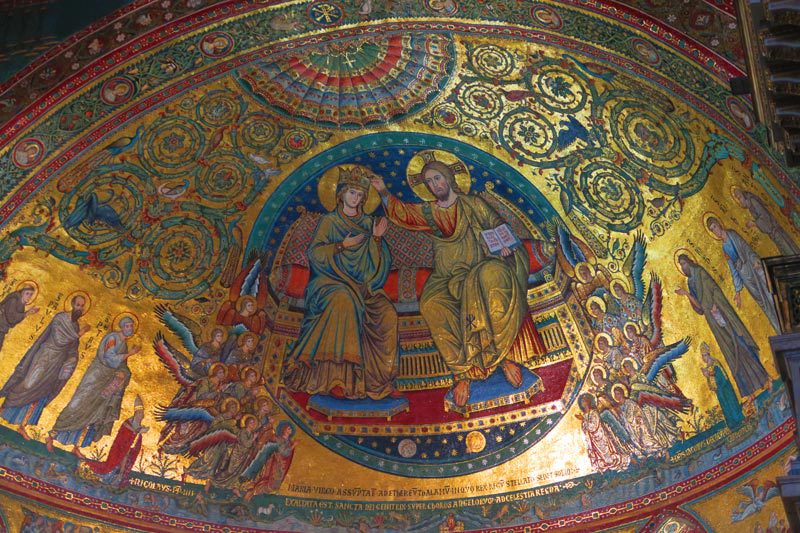
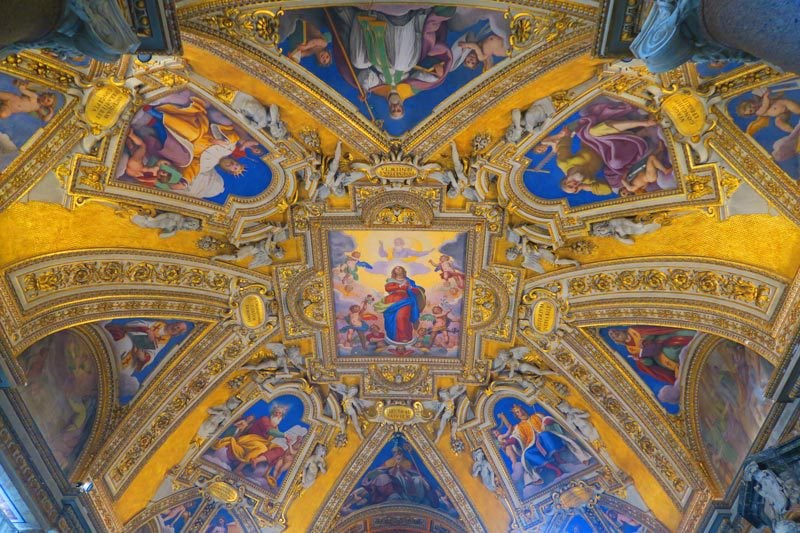

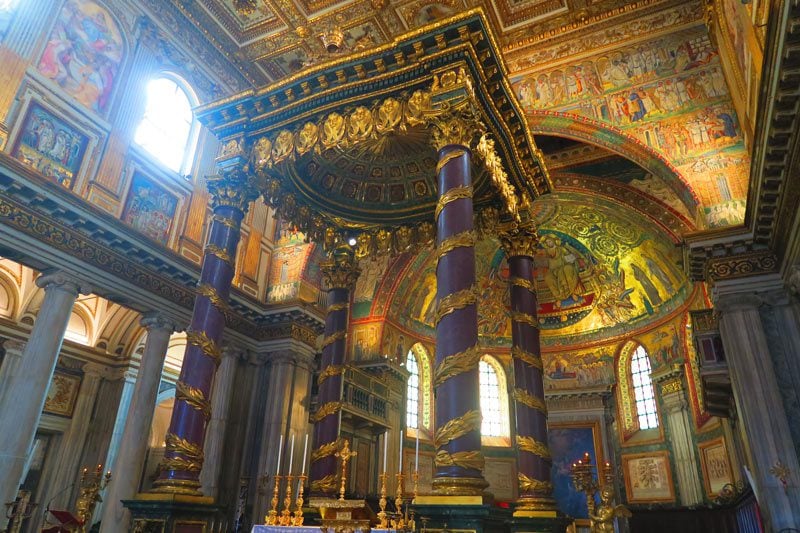
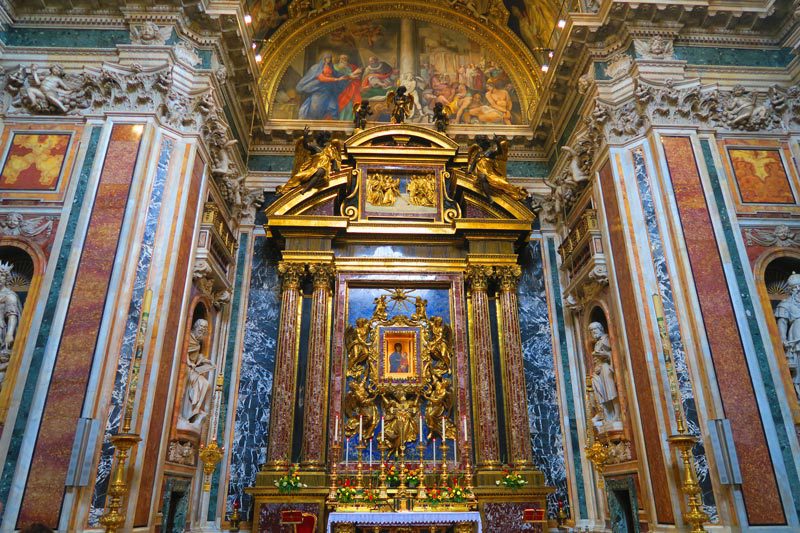
Where: Via di S. Maria Maggiore, close to Termini Station
Opening times: daily from 7 am–6:45 pm
San Giovanni in Laterano
From one major papal basilica to another, San Giovanni in Laterano, also known as Santissimo Salvatore e Santi Giovanni Battista ed Evangelista in Laterano (that’s right), is Rome’s official cathedral and the seat of the Pope as the bishop of Rome. It is the oldest basilica in the West and the oldest public church in Rome. The present structure was only completed in 1735 but there has been a church here since the 4th century AD. It used to serve as the Pope’s residence but upon return the papacy to Rome from Avignon, the Pope decided to move 4km’s “up the road” to the Vatican. Inside the grand interior lie six papal tombs, 12 impressive sculptures of the Apostles and a ton of religious artwork.


Where: Piazza di S. Giovanni in Laterano, close to the Colosseum
Opening times: daily from 7 am–6:30 pm
St. Peter’s Basilica
Welcome to the largest church in the world and center of the Catholic world, a massive shrine dedicated to Saint Peter who is buried right beneath the basilica. It took 120 years to complete its construction, with Italy’s finest artists, including Bernini and Michaelangelo taking part in the holy mega-project.


Of the basilica’s countless treasures, Michaelangelo’s Pieta and Bernini’s Baldacchino top the list. The former is a sculpture depicting Mary caring for a frail man and the latter is a jaw-dropping bronze canopy set high above the altar.

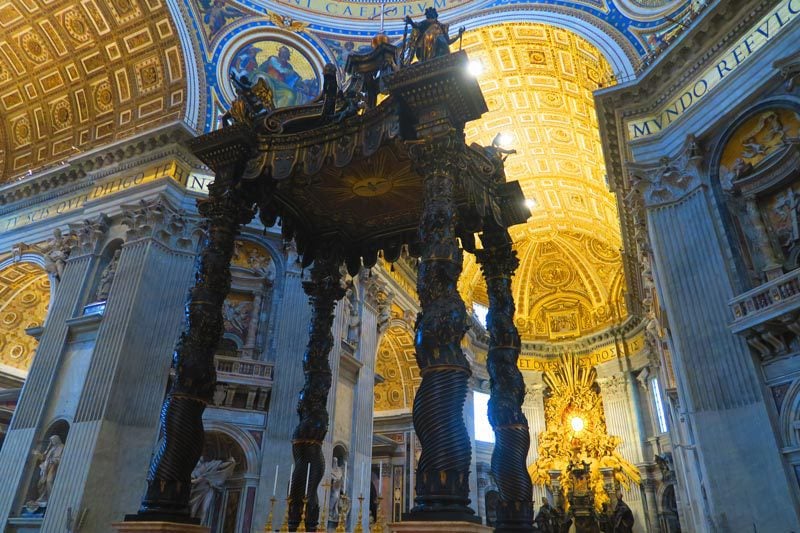
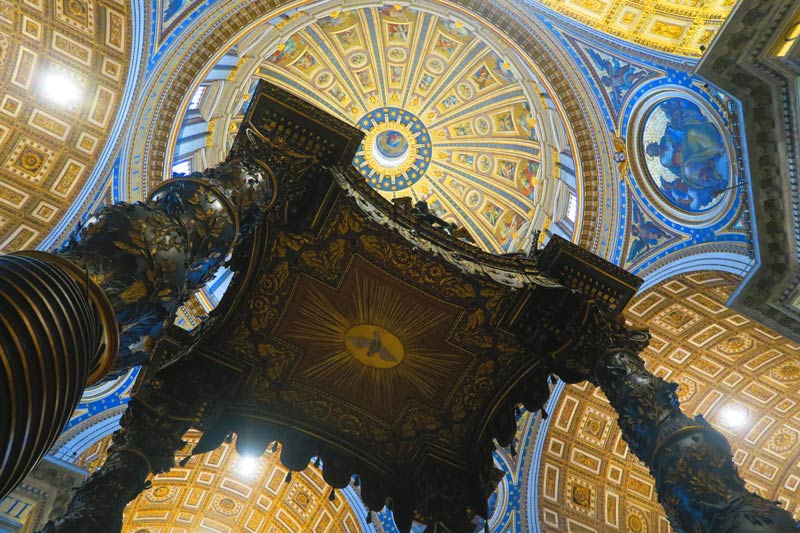
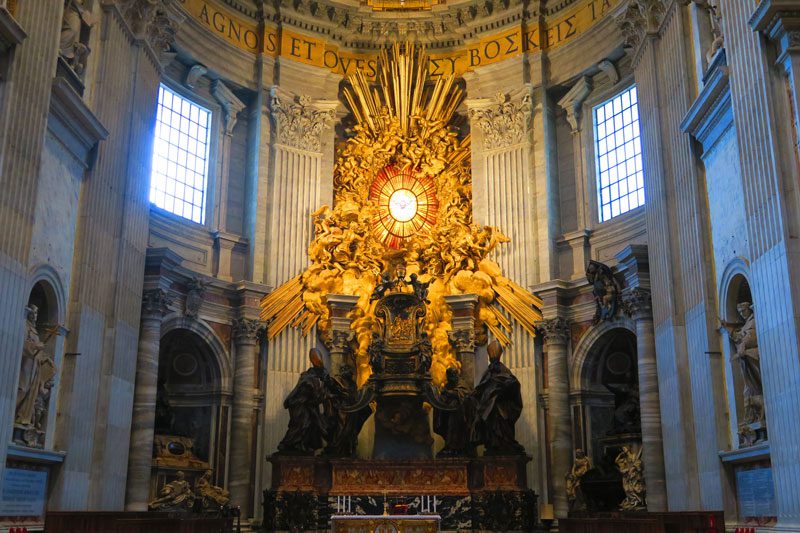
Other highlights in St Peter’s include the basilica’s intricately decorated domes, religious sculptures and paintings. It’s hard to fathom the amount of resources that were invested to construct this church and the value of its interior decorations. On the exterior, St. Peter’s Square greets visitors and hosts papal masses, the grandest of all Roman squares and a fitting entrance to the ruling capital of the Catholic world.
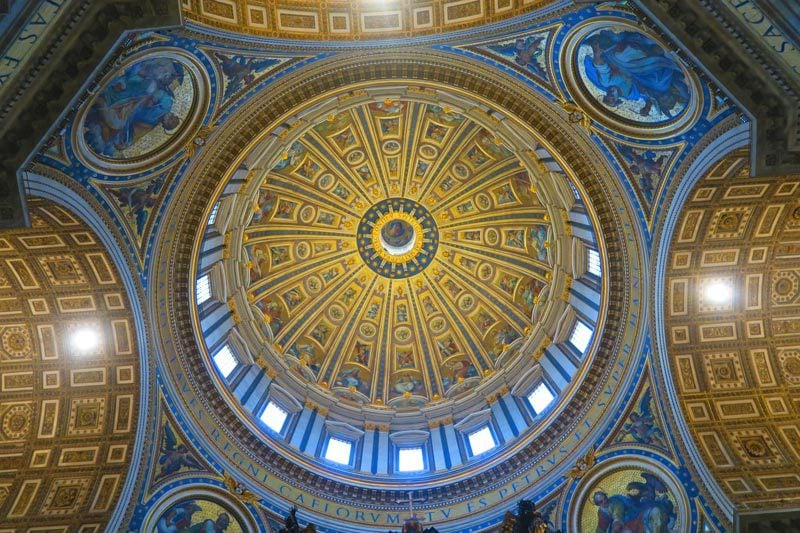

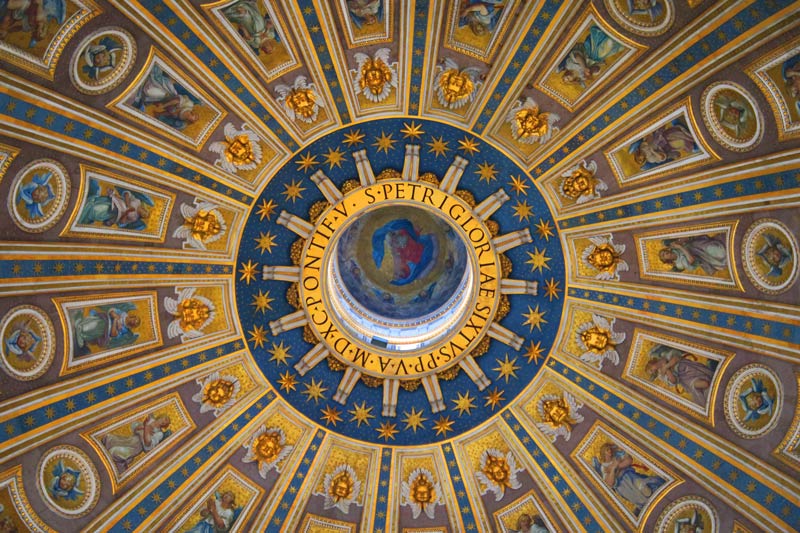
Where: St. Peter’s Square in the Vatican
Opening times: daily from 7 am–7 pm (6:30 pm closure between October-March)
Cost: free to enter but skip-the-line-tickets will get you to bypass the long security queue
Tip: access to the dome (great interior/exterior views), treasury and grottos are possible (extra charge)
What’s Next?
There you have it, the absolute best churches in Rome! As I hope you’ve seen, Rome’s churches are more like museums and offer visitors a chance to head back in time and experience architecture and art of the highest grandeur. Be sure to check out the rest of the Rome travel guide collection, including Rome travel tips, day-by-day Rome itinerary, the best places to eat and lots more.
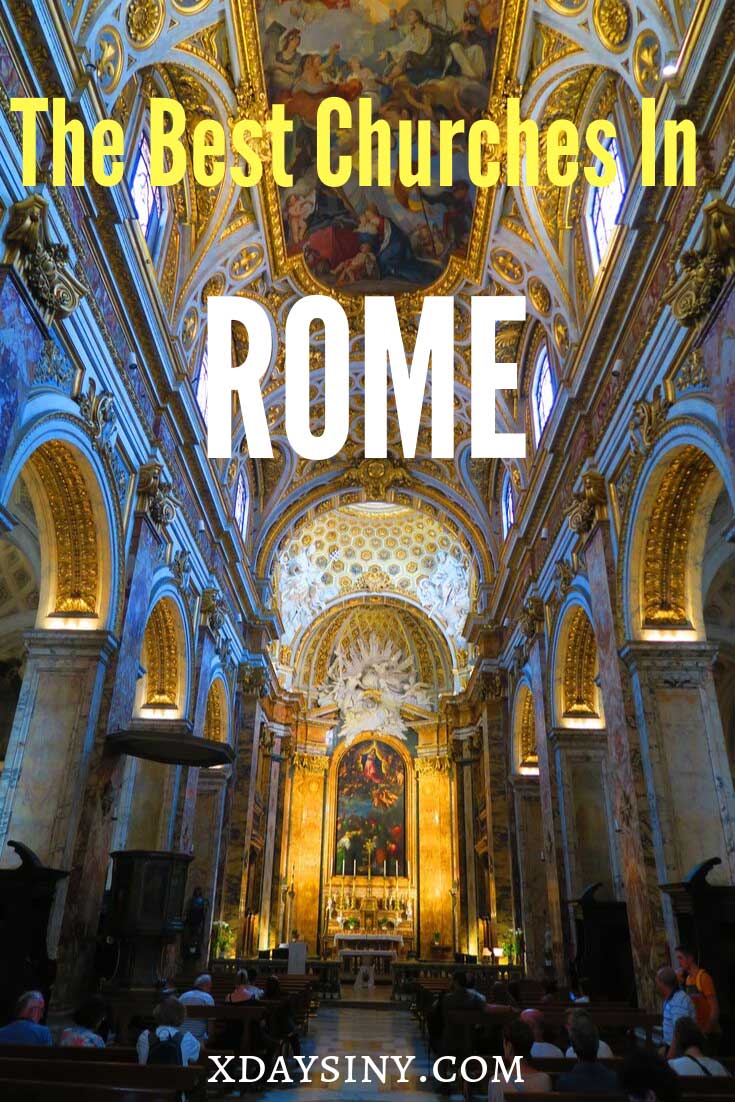

Pin These Images To Your Favorite Boards!
